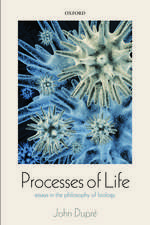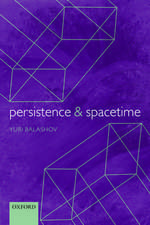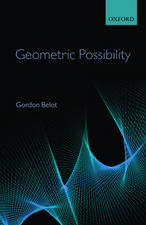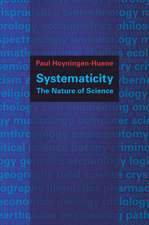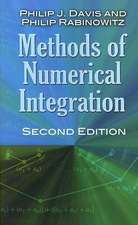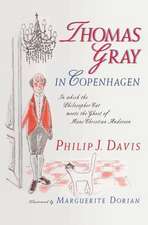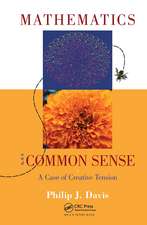Mathematical Encounters of the Second Kind
Autor Philip J. Davisen Limba Engleză Paperback – 27 sep 2011
| Toate formatele și edițiile | Preț | Express |
|---|---|---|
| Paperback (1) | 309.80 lei 43-57 zile | |
| Birkhäuser Boston – 27 sep 2011 | 309.80 lei 43-57 zile | |
| Hardback (1) | 413.82 lei 43-57 zile | |
| Birkhäuser Boston – dec 1996 | 413.82 lei 43-57 zile |
Preț: 309.80 lei
Nou
Puncte Express: 465
Preț estimativ în valută:
54.81€ • 63.86$ • 47.86£
54.81€ • 63.86$ • 47.86£
Carte tipărită la comandă
Livrare economică 19 ianuarie-02 februarie 26
Preluare comenzi: 021 569.72.76
Specificații
ISBN-13: 9781461275473
ISBN-10: 1461275474
Pagini: 316
Ilustrații: VIII, 304 p.
Dimensiuni: 152 x 229 x 17 mm
Greutate: 0.42 kg
Ediția:1997
Editura: Birkhäuser Boston
Colecția Birkhäuser
Locul publicării:Boston, MA, United States
ISBN-10: 1461275474
Pagini: 316
Ilustrații: VIII, 304 p.
Dimensiuni: 152 x 229 x 17 mm
Greutate: 0.42 kg
Ediția:1997
Editura: Birkhäuser Boston
Colecția Birkhäuser
Locul publicării:Boston, MA, United States
Public țintă
ResearchCuprins
I Napoleon’s Theorem.- II Carpenter and the Napoleon Ascription.- III The Man Who Began His Lectures with “Namely”.- IV The Rothschild I Knew.- Acknowledgments.
Recenzii
"This is a truly fascinating story which ... provides an insight into the life of an outstanding scientific writer."
—J. Usher, Mathematics Today
"If I ever were stranded in an airport, bored silly and searching for someone to talk to, I think I'd like Phillip J. Davis to be stranded with me... Davis appears to have no artifice. His book is a compendium of several tales that caught his interest. It's also a book that, often subtly, reveals the sort of mathematical lore that keeps mathematicians talking as they gather for afternoon tea in universities throughout the country."
—SIAM Review
—J. Usher, Mathematics Today
"If I ever were stranded in an airport, bored silly and searching for someone to talk to, I think I'd like Phillip J. Davis to be stranded with me... Davis appears to have no artifice. His book is a compendium of several tales that caught his interest. It's also a book that, often subtly, reveals the sort of mathematical lore that keeps mathematicians talking as they gather for afternoon tea in universities throughout the country."
—SIAM Review


